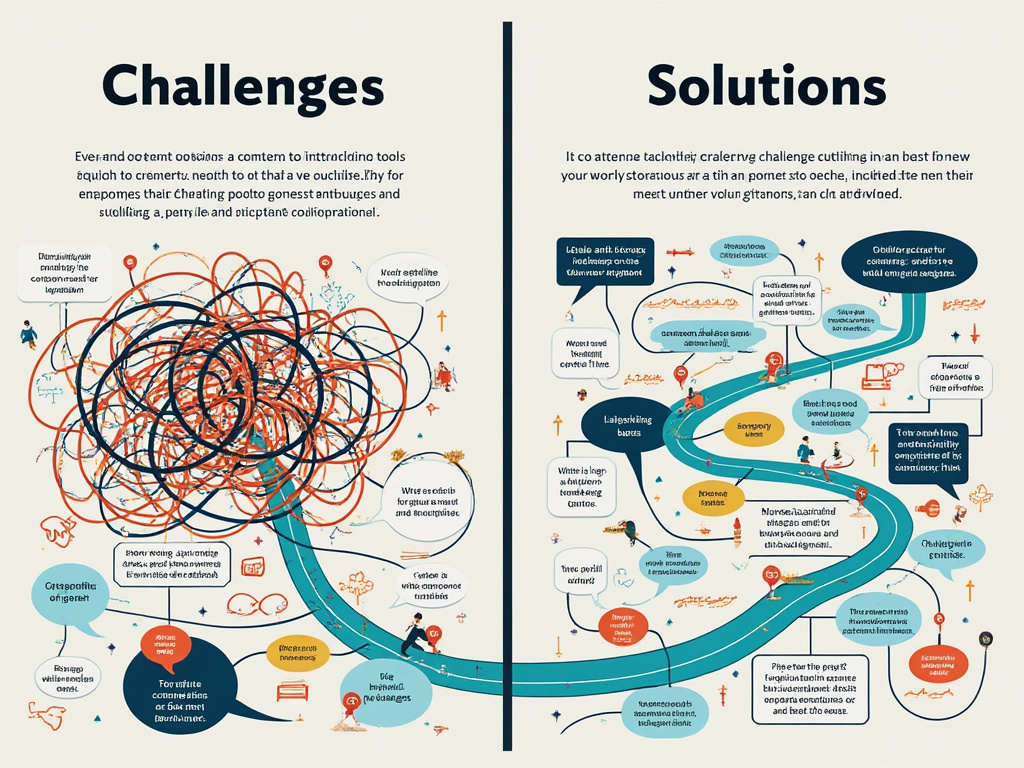
Effective Content Strategy for Naturopathic and Functional Healthcare Practitioners
Have you ever wondered why some content resonates while others fall flat? A well-crafted content strategy is not just a key, but a powerful tool that can help you capture your audience's attention and drive engagement. By immersing yourself in discovering actionable tips backed by research and real-life examples, you can immediately empower yourself to create content that truly resonates.
Key Takeaways
A well-crafted content strategy aligns with business objectives and addresses user needs, ensuring each piece of content has a clear purpose.
Key components of a content strategy include setting SMART goals, conducting audience research, diversifying content formats, and choosing appropriate distribution channels.
Critical steps in developing a content strategy involve performing a content audit, creating a content calendar, and setting measurable metrics and KPIs.
Utilizing tools like Google Analytics, SEMrush, and Trello can significantly enhance content management, distribution, and performance tracking.
Real-life examples, such as Adobe’s user-generated content and Coca-Cola’s viral campaigns, demonstrate the effectiveness of strategic content planning in both B2B and B2C contexts.
Common challenges in content strategy include producing high-quality content, maintaining consistent output, and ensuring content expertise, which can be mitigated through careful planning and collaboration with industry professionals.

Understanding Content Strategy
A content strategy represents a high-level plan guiding the intentional creation and maintenance of information in a digital product. With a robust content strategy, every piece of content serves a legitimate purpose, aligning with your business objectives and addressing your user's needs. This alignment ensures that your content attracts and engages your target audience, effectively driving your business goals.
A well-crafted content strategy involves several key components:
Content Creation
Effective content creation is the cornerstone of your strategy.
Topic Selection: Focus on relevant topics that resonate with your audience. Understanding their needs and interests is crucial to ensuring engagement.
Content Formats: Choose between blog posts, videos, or infographics depending on what resonates most with your audience and fits best on your distribution channels.
Content Distribution
Once you've created valuable content, distributing it effectively is essential.
Channels: Select appropriate channels such as websites, social media, or email newsletters. Pinpoint where your target audience spends their time online to maximize reach and impact.
By understanding and implementing these components, you can create a streamlined content strategy that meets user expectations and fulfills business objectives.
Key Components of a Content Strategy
Consider several critical elements to create a potent content strategy. These components guide your efforts, ensuring your content resonates with your audience and achieves your business goals.
Content Goals and Objectives
Your content goals and objectives need to be SMART: specific, measurable, achievable, relevant, and time-bound. For instance, aim to increase website traffic by 20% in six months. Having clear goals steers your content planning and helps you measure success accurately.
Audience Research
Understanding your audience is crucial. Conduct market and competitive research to identify what your target audience needs. Develop detailed persona profiles, including demographics, pain points, and preferences. This information will tailor your content to their needs, making it more engaging and effective.
Content Formats and Channels
Diversify your content formats to keep your audience engaged. Use blogs, videos, infographics, and podcasts. Also, select the right channels to distribute content, such as social media, email newsletters, and your website. Properly chosen formats and channels ensure your content reaches and resonates with your audience.
Consistently apply these components to your strategy for enduring success. Use tools like Trello, Asana, or Google Sheets to plan and schedule your content, maintaining efficiency and consistency across efforts.
Developing a Content Strategy
Developing a content strategy is essential for naturopathic and functional healthcare practitioners

looking to enhance their online presence. A well-defined strategy helps meet user needs and achieve your business objectives effectively.
Conducting a Content Audit
Start by performing a content audit. This process involves reviewing all existing content to identify what works and doesn't. You might wonder why this is so critical. It's vital because it highlights gaps, redundancies, and opportunities for improvement. Record each piece of content, noting its performance metrics like engagement rates and conversion statistics.
Check for relevancy and accuracy significantly since medical information changes rapidly. Ensure all your articles, blog posts, and social media content reflect the latest research and best practices. Use tools like Screaming Frog and Google Analytics to simplify this task. They can scrape through your site, providing data on the most effective and required updates.
Creating a Content Calendar
Once the audit is complete, the next step is to create a content calendar. This calendar should outline when and where you'll publish upcoming content. For practitioners, this tool can guide your efforts in topics ranging from holistic treatments to lifestyle advice.
Include critical dates such as holidays and health awareness days relevant to your practice. For example, National Nutrition Month in March can inspire posts about diet and wellness. Aim for a mix of content types—blog posts, videos, infographics—to keep your audience engaged. Use platforms like Trello or Asana to keep track of deadlines and assignments, ensuring nothing falls through the cracks.
Setting Metrics and KPIs
Metrics and KPIs (Key Performance Indicators) are crucial for measuring your content strategy's success. Establish measurable goals such as increasing website traffic by 20% or achieving a click-through rate on Google Ads.
Your metrics may include user engagement, like the time spent on each page or the number of shares on social media. Conversion rates offer another critical metric, whether it's new patient bookings or downloads of your wellness guide. By setting these KPIs, you can continually make data-driven decisions to refine and improve your strategy.
Incorporating these core practices—content audit, content calendar, and metrics—will set you on the right path to developing a robust content strategy.
Tools and Resources for Content Strategy
In the evolving field of naturopathic and functional healthcare, leveraging the right tools can significantly boost your online presence. Here are some essential tools and resources for a robust content strategy.
Content Management Systems
Effective content management begins with choosing the right platform. Your CMS should offer intuitive interfaces, customizable templates, and robust SEO features. Here are a few options:
WordPress: Highly versatile, WordPress is ideal for managing both blogs and complex websites. Its extensive plugin ecosystem helps you extend functionality from SEO to e-commerce.
Squarespace: Known for its ease of use, Squarespace offers beautifully designed templates. It’s perfect if you seek a visually appealing and straightforward solution.
Wix: Offering drag-and-drop functionality, Wix enables you to create professional-looking websites effortlessly. SEO features are built-in, making it easy to optimize content.
Analytics Tools
Understanding your audience’s behavior is crucial for refining your content strategy. These analytics tools will help you gather invaluable insights.
Google Analytics: This powerful tool tracks user behavior on your site, helping you measure traffic sources, bounce rates, and engagement levels. You can fine-tune your content based on detailed reports.
Kissmetrics: Focused on user engagement, Kissmetrics provides detailed visitor insights. Track how users interact with your content across various sessions for a more comprehensive understanding.
Hubspot: Offering more than analytics, Hubspot integrates marketing automation with customer relationship management. It allows you to track lead generation goals and manage your content strategy seamlessly.
Marketing and SEO Tools
Enhancing visibility requires robust marketing and SEO strategies. Use these tools to improve your search engine rankings and discover trending content.
SEMrush/ahrefs: SEMrush and ahrefs provides deep insights into popular keywords and content within your niche.
Buzzsumo: Identify trending topics on social media with Buzzsumo, which helps craft content that resonates with your audience. Easily research high-performing content and understand what works.
Google Campaign URL Builder: Use this tool to track the effectiveness of your marketing campaigns. Generate custom URLs to see where your visitors come from and optimize accordingly.
Customer Feedback Tools
Understanding your audience is pivotal. These tools help you gather direct user feedback to refine your offerings and content.
Survey Monkey: Create extensive surveys with Survey Monkey, allowing you to capture detailed opinions and feedback. Use this data to align your content strategy with your audience's needs.
Typeform: Known for its user-friendly interface, Typeform makes survey-taking a seamless experience. Engage your users with interactive surveys, gaining insights to fine-tune your approach.
Content Creation Tools
Crafting compelling content is easier with the right tools. These resources ensure your content remains engaging and visually appealing.
Canva: This online image editor offers some of the most robust features. Edit images to meet your content needs with speed and high quality.
xMind: Brainstorm and organize your ideas with xMind. This tool helps map your content strategy effectively, ensuring all aspects are covered.
Research Tools
Staying informed about industry trends is vital. These tools help you discover what’s currently popular and what your audience seeks.
AnswerThePublic: Discover what questions people are asking on the Internet. This tool helps you create content that directly addresses your audience's queries.
Think With Google: Use this resource to identify trending topics. Google’s insights help tailor your content to what’s currently in demand.
Usepanda.com: Stay updated with trending articles and resources in your industry. Usepanda curates the latest information, helping you keep your content strategy fresh.
Carry out these tools to refine your content strategy, ensuring it aligns with your digital marketing goals and audience needs in the naturopathic and functional healthcare space.
Challenges and Solutions in Content Strategy
Exploring the complexities of content strategy can be daunting, especially in the naturopathic and functional healthcare sectors. Practitioners often face numerous obstacles when crafting the perfect content plan for their business.
Common Pitfalls
Producing High-Quality Content
It is challenging to create content that resonates with your specific audience and stands out from competitors. Many practitioners struggle to hit the mark, leading to content that fails to engage.Generating Content Consistently
Maintaining a steady flow of content to keep your audience engaged can take time and effort. Without a structured plan, content generation often falls by the wayside, resulting in inconsistent output.Prioritizing Content Expertise
Ensuring that knowledgeable professionals create your content can be difficult. Content without sufficient expertise may often lack the depth needed to resonate with your audience.
Producing High-Quality Content
Thoroughly research your target audience. Understand their pain points and needs. Create unique, high-value content that addresses these issues. For example, you might develop detailed guides on natural remedies or functional health tips.Generating Content Consistently
Develop a documented content strategy. This should include a detailed content calendar, helping you plan and track your content output. Prioritize tasks to ensure regular updates. Engaging platforms like blogs, social media, and newsletters can help maintain momentum.Prioritizing Content Expertise
Collaborate with industry experts. This collaboration ensures that your content is accurate and highly informative. Consider guest posts from renowned professionals or interviews with leading naturopaths.
Address these challenges with strategic solutions to make your content strategy robust and effective. By thoroughly understanding your audience, maintaining consistent content, and leveraging expertise, you'll create valuable and impactful content that enhances your digital presence.
Conclusion
If you're a naturopathic or functional healthcare practitioner looking to bump up your online presence, having a solid content strategy is key. Consider using content calendars and teaming up with industry pros to keep pumping out great content. Ensure you have the right tools for managing your content, checking analytics, and handling SEO to make things easier. Take a leaf out of successful case studies, craft personalized campaigns, and tap into user-generated content. Understanding your patient's pain points will help you create content that hits home. These moves will boost your digital presence and get you connecting with your healthcare audience effectively.






